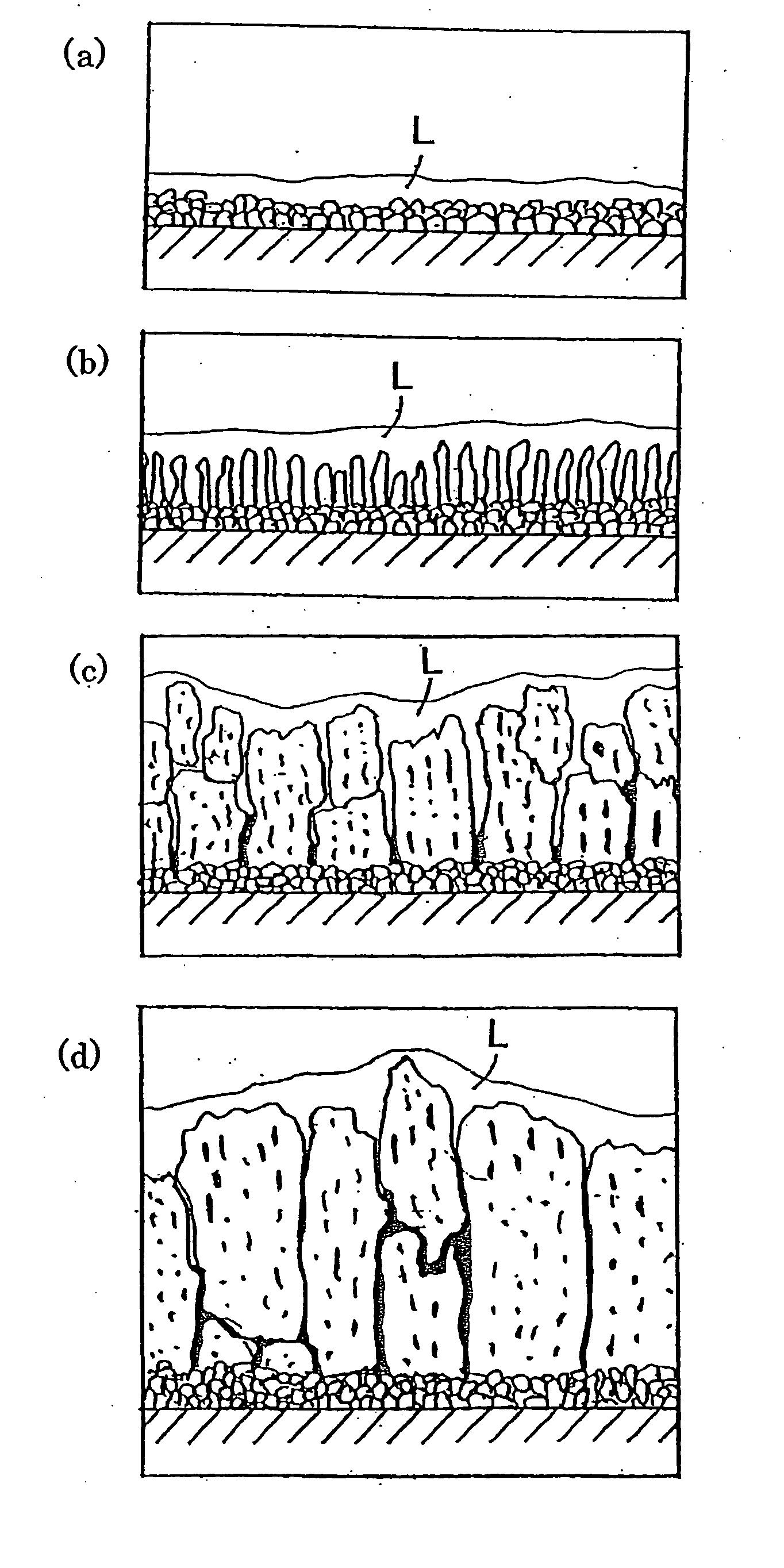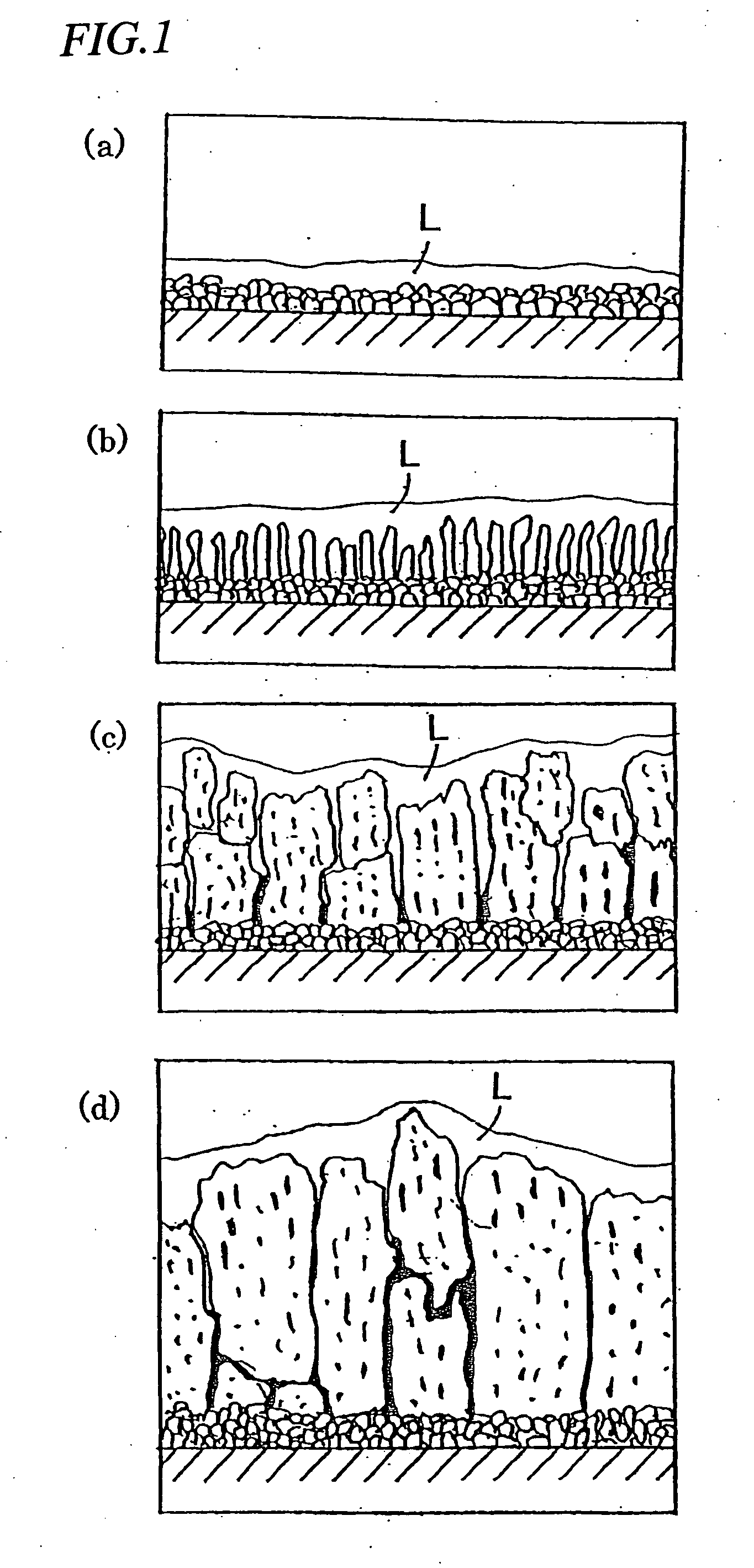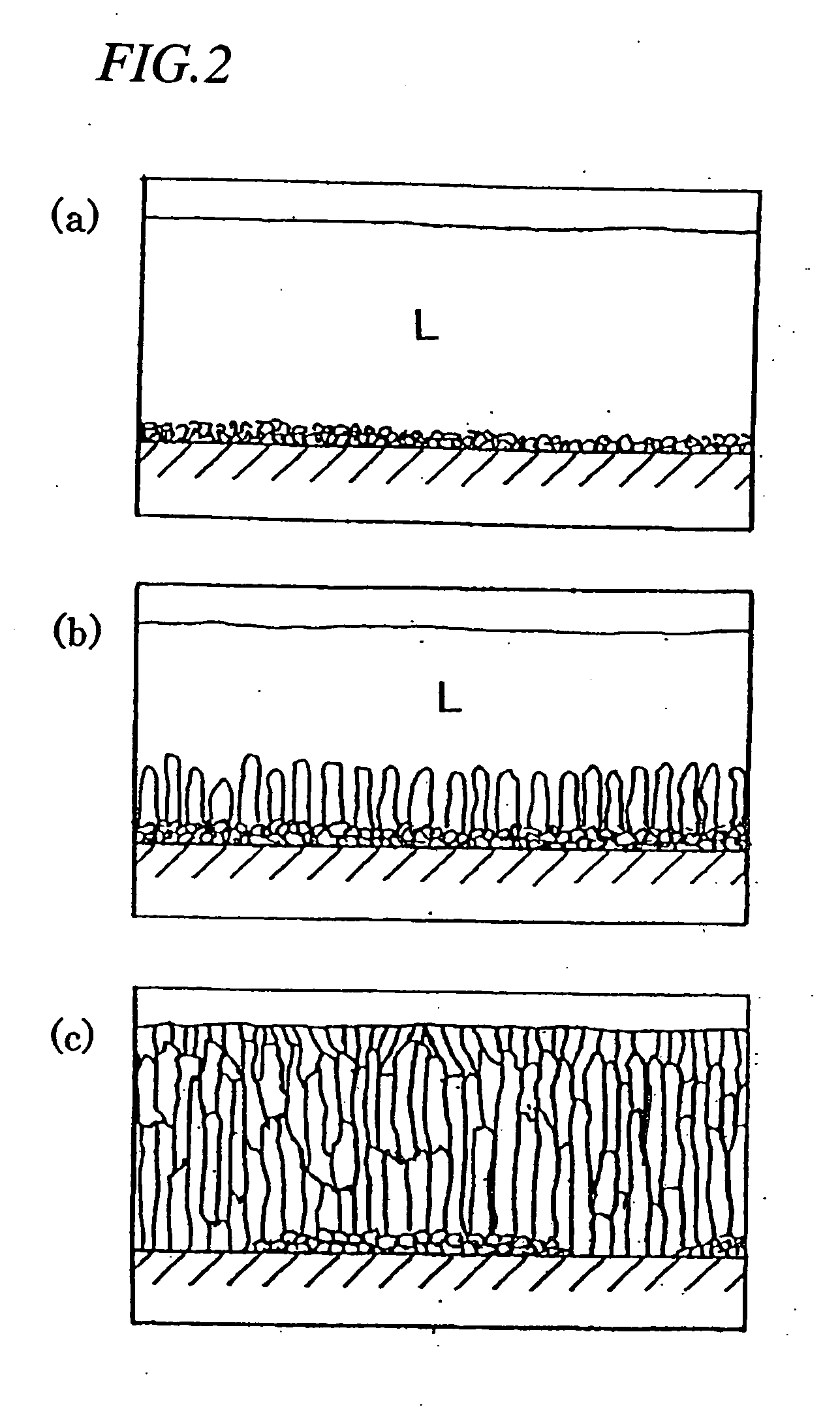Sinter magnet made from rare earth-iron-boron alloy powder for magnet
a technology of iron-boron alloy and rare earth iron-boron, which is applied in the manufacture of inductance/transformer/magnet, magnetic bodies, magnetic materials, etc., can solve the problems of reducing the pulverization efficiency or coercivity of the resultant magnet, increasing the manufacturing cost, and reducing productivity
- Summary
- Abstract
- Description
- Claims
- Application Information
AI Technical Summary
Benefits of technology
Problems solved by technology
Method used
Image
Examples
examples
[0052] Setting the composition shown in the following Table 1 as a target, solidified alloys to be rare-earth-iron-boron based magnet alloys were made by the three methods, namely, the method of the present invention (i.e., centrifugal casting process), a strip casting process and an ingot process. The alloys obtained by these three methods will be referred to herein as Alloy A, Alloy B and Alloy C, respectively. In an alloy to which the present invention is applied, Dy and Tb behave in substantially the same way. Thus, an example including Dy as an additive will be described.
TABLE 1NdPrDyBCoAlCuFe15.05.010.01.00.90.30.1Bal
where “Bal” means the balance. The numerals in Table 1 indicate the respective mass percentages of the elements on the upper row to the overall alloy.
[0053] In the centrifugal casting process of this example, the alloy was made by scattering a melt having the composition specified above (at about 1,300° C.) with a centrifugal force toward the inner surfaces of...
PUM
| Property | Measurement | Unit |
|---|---|---|
| temperature | aaaaa | aaaaa |
| size | aaaaa | aaaaa |
| size | aaaaa | aaaaa |
Abstract
Description
Claims
Application Information
 Login to View More
Login to View More - R&D
- Intellectual Property
- Life Sciences
- Materials
- Tech Scout
- Unparalleled Data Quality
- Higher Quality Content
- 60% Fewer Hallucinations
Browse by: Latest US Patents, China's latest patents, Technical Efficacy Thesaurus, Application Domain, Technology Topic, Popular Technical Reports.
© 2025 PatSnap. All rights reserved.Legal|Privacy policy|Modern Slavery Act Transparency Statement|Sitemap|About US| Contact US: help@patsnap.com



